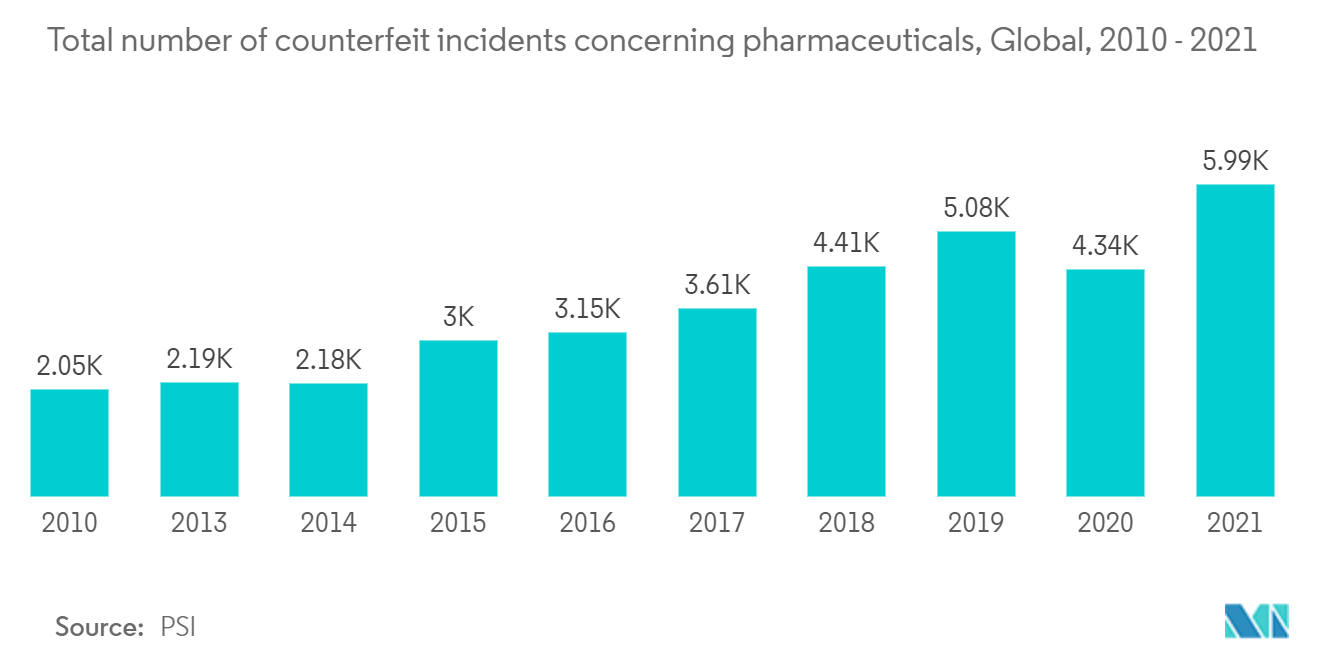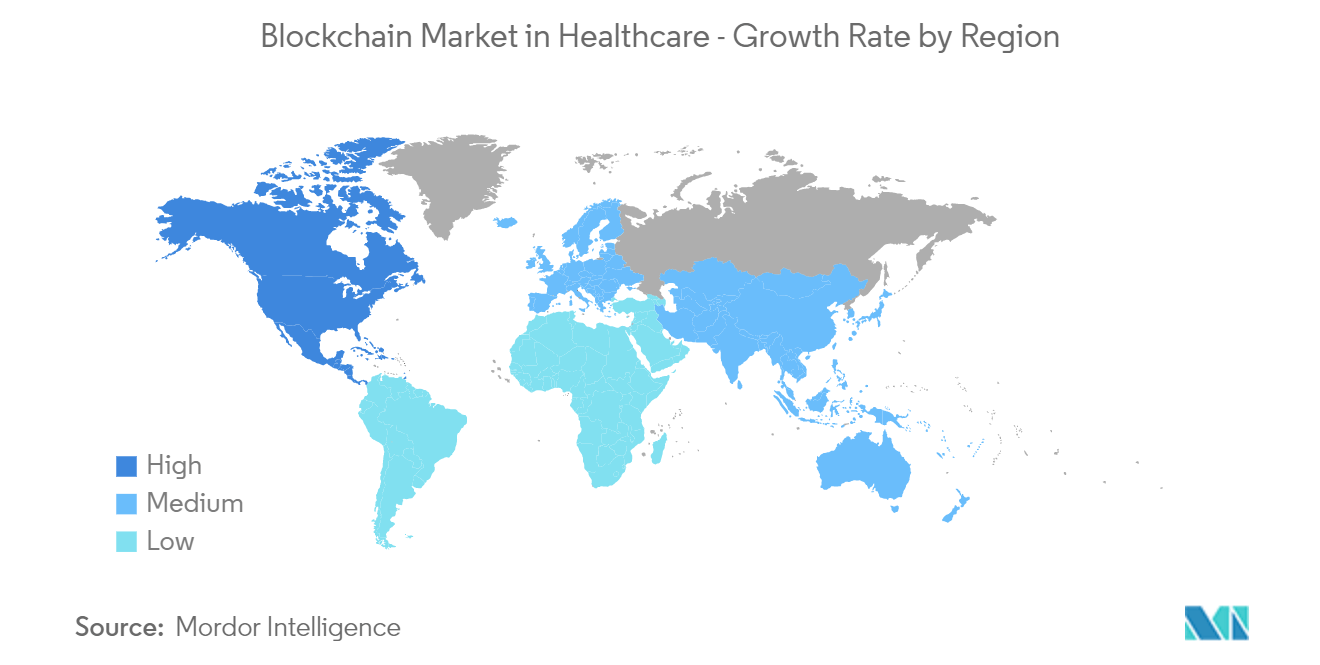Market Trends of Blockchain Industry in Healthcare
This section covers the major market trends shaping the Blockchain in Healthcare Market according to our research experts:
Counterfeit Proofing and Data Protection to drive the Market
- The WHO estimates that many countries in Africa and parts of Asia and Latin America have areas where more than 30% of the medicines on sale can be counterfeit, and that incidents of substandard or counterfeit medicines continue to increase. Several factors have contributed to these incidents, such as pharmaceutical supply chains, which are very complex and are at risk due to the involvement of under-regulated wholesalers, illicit distributors, non-legitimate internet pharmacies, and multiple routes for importation around the world. Blockchain-based connected supply chains are intended to curb the problem of counterfeiting by sharing and accessing health data, software code, metadata, and other products connected to healthcare.
- For instance, the Pharmaceutical Security Institute reported 196 such incidents of pharmaceutical crime in 2002, according to PSI (Pharmaceutical Security Institute). However, the annual number of these incidents has significantly increased over time, reaching almost 6,000 last year.
- Additionally, it is anticipated that rising investment in creating effective medical examination systems, wearable device cryptography, and healthcare record systems will offer the market lucrative opportunities.
- In a recall case, manufacturers must communicate clearly and swiftly with the entire supply chain, from wholesalers to retail pharmacies, and collect faulty items. This demands an increased need for collaboration, which blockchain can attain.
- It is anticipated that increasing disease prevalence would generate a vast amount of data, driving up demand for data management. Furthermore, applying blockchain technology to medical records will guarantee that the data is accurate and cannot be changed. Key industry players are investing more in this technology, which is making the market grow even more.

North America to Witness the Highest Growth
The largest global healthcare blockchain market is expected to be in North America. The implementation of regulations in the region regarding the security of patient data and raising the standard of care, the rise in healthcare fraud, the need to rein in rising healthcare costs, and the expanding need to safeguard medical data from tampering are what are fueling the growth of the North American healthcare blockchain market.
- In the United States, the FDA's Drug Supply Chain Security Act outlines requirements to develop and enhance drug supply chain security next year. These developments are drivers for the blockchain industry as companies try to manage product quality and security.
- An aging population and rising healthcare costs indicate higher healthcare spending in the United States. Thus, blockchain offers a potential solution to safeguard patient and clinical data.
- Medical errors resulting from poorly coordinated treatment, such as planned actions not executed as intended or errors of omission in patient records, are a major cause of death in the US. Without storing patient data on the blockchain, blockchain-based medical record systems can be integrated with current medical record software to provide a comprehensive, single view of a patient's record.
- The Centers for Medicare & Medicaid Services predicts that national health spending in the United States will increase at an average annual rate of 5.4% for 2019-28 and reach USD 6.2 trillion by 2028, making it one of the countries with the highest healthcare expenditures. The health share of the economy is anticipated to increase from 17.7% in 2018 to 19.7% in 2028 as a result of national health expenditures being forecast to grow 1.1% points faster than the gross domestic product annually over the 2019-28 period. The huge sum of expenditure will allow market expansion in the region.


